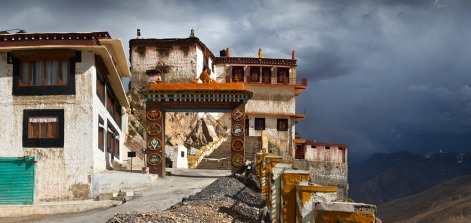When nurse and tourist guide Joan Pollock set out to the Spiti Valley in 1993, little did she know the place, and the people, would become such a huge part of her life.
I first went into the Spiti valley in 1993 at the invitation of the head doctor of the Lady Willingdon Hospital in Manali Himachel Pradesh, northern India. Spiti lies on the Tibetan border at an altitude of 4,500 metres, in the Greater Himalayan Range.
As a nurse and professional tourist guide I was no stranger to these mountain areas. The winter lasts more than six months when temperatures drop to minus 35°C. The valley had been a buffer zone between China and India for 32 years. I discovered a population of 10,000 Tibetan Buddhists living in conditions of extreme deprivation.
I was appalled by the contrast between the heart stopping beauty of the mountains and the deprivation in which the people were living. With no sanitation, no clean water, and no health or education facilities, they were surviving only on subsistence farming. It was medieval and primitive.
When I reached Kaza the capital town, I found the majority of the people were illiterate, and that ill health was rife. Men often developed stomach cancer from drinking a rough home-distilled grain - Chang and Arak. Goitres were commonplace, women died in childbirth and health problems among children were widespread and complex, mostly due to bad diet and lack of basic hygiene. Tuberculosis was on an epidemic level.
With no sanitation, no clean water, and no health or education facilities, they were surviving only on subsistence farming. It was medieval and primitive.
Determined to do something about it, I set up the Spiti Projects Charity, raising money to build a simple hospital in Kaza, complete with operating theatre. This was part of and staffed by The Lady Willingdon Hospital in Manali. For the next five years during the summer, I persuaded General Practitioner doctors from the West to come and work in medical clinics we set up in the small villages scattered about the valley.
People walked for miles to get medical help. Sometimes we were called to see a sick person in a village an hour's trek to a higher level and there were very few roads then, so people still travelled on horseback or walked. Many people didn't leave their village during their lifetime.
This is one of the last purely Buddhist valleys left, with four monasteries over a thousand years old. The borders were changed in the 19th century by the British, which makes Spiti part of India rather than China/Tibet as it was once. But the ancient traditions and rituals are still practiced and the people have a strong sense of their spirituality and a caring that we have lost – and could learn from.
What began many years ago as a job, albeit an adventurous one, has become so much more. Have you ever set out on an adventure that turned into something you never expected?
Saving Spiti: A documentary about the Spiti Projects Charity and its founder, Joan Pollock, is produced by Bafta Award winner Hugh Purcell and photographed and edited by One World Award winner Zena Merton MA.
The film will be launched at the Royal Geographic Society at 7pm on Tuesday 12 April. Tickets: £20/£10 under 16s (fundraising goes to Spiti) and you can buy them online, here.




